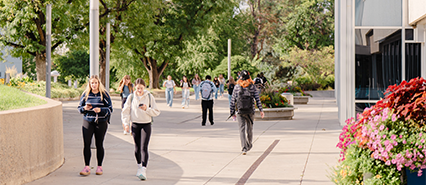Subsidized and Unsubsidized
The Federal Direct Loan Program provides low-interest loans to eligible undergraduate and graduate students to help cover the cost of higher education. These loans are funded by the U.S. Department of Education and must be repaid after graduation or once you drop below half-time enrollment.
There are two primary types of Direct Loans offered at CSU Pueblo — Subsidized and Unsubsidized. Both have fixed interest rates and flexible repayment options, but differ in how interest is handled while you are enrolled.
| Feature | Subsidized Loan | Unsubsidized Loan |
|---|---|---|
| Eligibility | Available only to undergraduate students with demonstrated financial need (as determined by FAFSA). | Available to undergraduate and graduate students regardless of financial need. |
| Interest While Enrolled | The U.S. Department of Education pays the interest while you are enrolled at least half time, during grace periods, and deferment periods. | Interest begins accruing immediately upon disbursement and is the borrower’s responsibility throughout the life of the loan. |
| Borrowing Limits | Annual limits depend on grade level and dependency status. Combined limits apply to both Subsidized and Unsubsidized loans. | Same annual limits as Subsidized loans; however, the total may include more Unsubsidized funds for independent students. |
| Interest Rate (2024–2025) | 6.53% | 6.53% (Undergraduate) 8.08% (Graduate) |
| Repayment Begins | Six months after graduation, withdrawal, or dropping below half-time enrollment. | Six months after graduation, withdrawal, or dropping below half-time enrollment (interest accrues throughout). |
Accepting Your Loan
To receive loan funds, students must first accept their loan through PAWS and complete the required federal documents below:
Borrow Responsibly
Only borrow what you need for educational expenses. Consider part-time employment or scholarships to help reduce debt. Review your borrowing history regularly through StudentAid.gov.
You can also explore budgeting and repayment guidance through ECMC Learning, CSU Pueblo’s free online financial literacy resource.
Need Help or Have Questions?
Contact Student Financial Services
📧 financialaid@csupueblo.edu
☎ 719-549-2753 | 📍 Administration Building, Room 203


